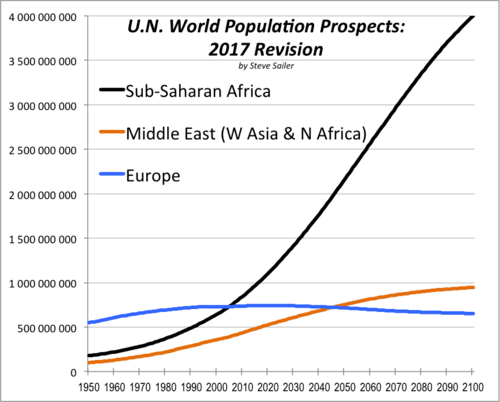
06/22/2017

A few decades ago the world started losing interest in the global population explosion as most countries began to get their fertility under control. But in 2012, the United Nations revealed to the handful of people paying attention that it had severely underestimated the actual number of births in sub-Saharan Africa by trusting local government statistics. As African countries slowly became more competent at recording vital statistics, the UN discovered that its complacency about African population growth had been unwarranted. Fertility in Africa was declining far more slowly than had been assumed.
Then in 2015, the UN issued a new forecast revising its estimate for Africa up even higher.
And today the UN released its 2017 population prospects. (You can download the data here.)
The UN’s new 2017 forecast for the continent of Africa (including North Africa) in 2100 is, once again, higher: up 81 million from the last forecast to a new record of 4,468,000,000.
The UN says that the population of Sub-Saharan Africa in 1990 was 493,320,020, while in 2017 it is 1,022,664,451. By 2050, only 33 years from now, sub-Saharan Africa will have reached 2,167,651,879. And by 2100, it will be 4,001,755,801.
The UN’s 2100 estimates for individual countries’ populations sound like dystopian science fiction:
My preference is for the first of those three possibilities.
Here’s the 2017 version of the World’s Most Important Graph:

This is a content archive of VDARE.com, which Letitia James forced off of the Internet using lawfare.